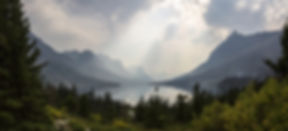

Call Us Now!
406-261-8865
Russian Knapweed






Russian Knapweed
(Acroptilon repens)
Common Names:
Turestan Thistle, Creeping Knapweed, Mountain Bluet, Russian Cornflower, Hardheads
Description:
Russian Knapweed is a perennial that differs from diffuse and spotted knapweed primarily in that it has a rhizomtous, or extensive, root system. Russian knapweed can grow up to three feet in height and forms dense colonies due to this root system. Roots are also distinguishable by their black color, bark-like texture, and by buds that develop into shoots. Leaves at all stages are a gray green in color due to the fine whitish hairs that over the leaves. Leaves are alternate. Lower stem leaves are lance-shaped and deeply lobed. The upper leaves are oblong, toothed, and become progressively smaller. Seedlings are oval, hairy and grey-green in color, but Russian knapweed is more likely to reproduce by root than by seed. This plant is bushy as to compared to diffuse or spotted knapweeds, and from June to September, produces a pink to purple flower that, when mature, becomes more cream colored. Bracts below the flowers have rounded papery tips. Seeds are ivory white and have hairy tips which fall off the seed as it matures. A single plant may produce up to 1,200 seeds annually.
Key Features:
Dark brown to black scaly roots and papery bracts below the flowerhead.
Habitat:
Russian Knapweed commonly grows along roadsides, pastures, croplands, clear-cuts, irrigation ditches as well as riverbanks and disturbed habitats. It tends to prefer clay type soils and a more arid environment.
Currently found in the following counties:
Beaverhead, Big Horn, Broadwater, Carbon, Cascade, Chouteau, Custer, Daniels, Dawson, Fallon, Fergus, Flathead, Gallatin, Garfield, Hill, Jefferson, Lake, Lewis & Clark, Madison, McCone, Meagher, Missoula, Park, Petroleum, Powell, Prairie, Ravalli, Richland, Roosevelt, Rosebud, Sanders, Sheridan, Silver Bow, Stillwater, Teton, Toole, Treasure, Valley, Wheatland, Yellowstone.
IWM
-
Herbicide
-
Cutting/mowing
-
Targeted Grazing
Interesting Facts:
Russian Knapweed does not readily establish in healthy, natural habitats, and it typically invades disturbed areas. Russian knapweed also produces its own herbicide, which inhibits the growth of competing plants. Russian knapweed is a member of the thistle family.
Commonly Confused Plants:
-
Many native members of Asteraceae resemble knapweed in the rosette stage
-
Other knapweeds
Photo Credits: Jerry R. Oldenettel; Jerry R. Oldenettel; Joseph M. DiTomaso, University of California - Davis, Bugwood.org;
John M. Randall, The Nature Conservancy, Bugwood.org